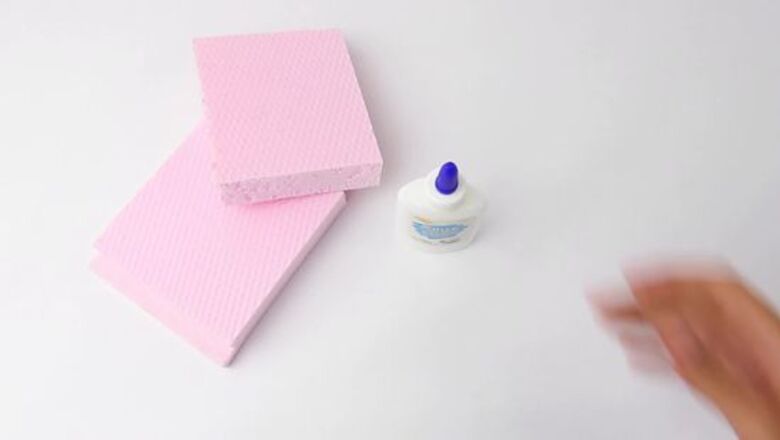
views
Picking the Right Glue
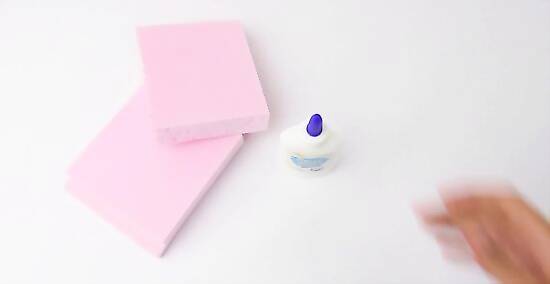
Use basic craft glue for simple needs. For simple, casual arts and crafts projects, the easiest way to glue Styrofoam is usually to use an ordinary white glue. This basic glue works reasonably well for a wide variety of uses, especially for gluing Styrofoam to construction paper, cardboard, and wood. It's also usually the cheapest and most accessible option, making it a great choice for simple projects. White school glue, such as Elmer's, is safe, non-toxic, and kid-friendly. It tends to be more runny and messy, however. White tacky glue, such as Eileen's, tends to be thicker and less messy. Note that while school glue is cheap and versatile, it may not be as strong or long-lasting as more expensive specialty glues, so you may not want to use it for projects where your Styrofoam will be put under stress (like Styrofoam glider planes, etc.). Because of its liquid form, white glue is best for attaching large blocks of Styrofoam together.
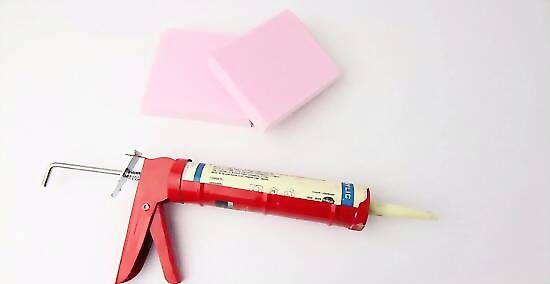
Use Styrofoam glue. Believe it or not, certain glues are actually developed specifically to be used with Styrofoam. This glue, sometimes marketed as "Styroglue", is usually fairly affordable, but can also be more difficult to find than ordinary school glue. Typically, Styrofoam glue can be purchased at many home improvement or arts and crafts stores. If you're thinking of buying Styrofoam glue, check the label before making your purchase. Some Styrofoam glues may be formulated for use only on Styrofoam, while others may be suitable for gluing Styrofoam to other surfaces.
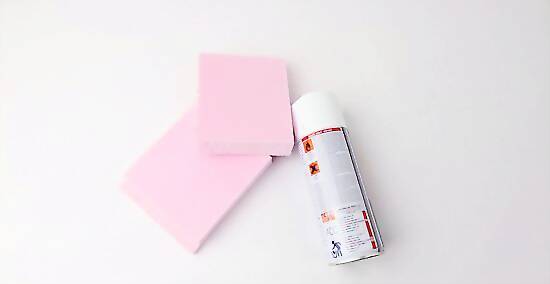
Use spray adhesive. Most aerosol adhesives (which are often available at hardware stores for $10 or less per can) offer a quick, convenient way to glue Styrofoam. Additionally, because these sprays are usually intended for multipurpose home usage, they generally work on a variety of surfaces. For instance, one low-price multipurpose adhesive is billed as being able to bind foam materials to metal, plastic, paper, cardboard, and wood. Consider testing the glue on an inconspicuous area first. If the glue does not say whether or not it is safe to use on Styrofoam, you might want to test it first. Some aerosol-based products, such as spray paint, can actually melt or dissolve Styrofoam. Because spray adhesives tend to be low-tack, it is best to use them when attaching large blocks of Styrofoam together. They are not a good idea for attaching two Stryofoam balls together, for example.
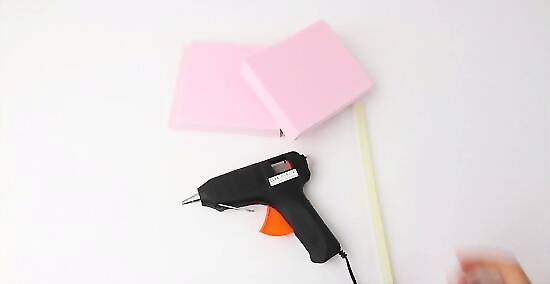
Use low temperature hot glue guns. Ordinary hot glue guns can also work well to bind Styrofoam to many different craft surfaces, like paper, cardboard, wood, and so on. However, when using a hot glue gun with Styrofoam, the cooler, the better. Extra-hot glue can burn or melt Styrofoam, which can release harmful fumes. Because of their precision, hot glue guns are great for attaching small Styrofoam objects together. They are also great for Styrofoam balls. Though the fumes that result from burning Styrofoam aren't likely to immediately hurt you, they're not something to treat lightly, as they can contain a variety of toxic chemicals. These include styrene and benzene, suspected carcinogens (cancer-causing agents).
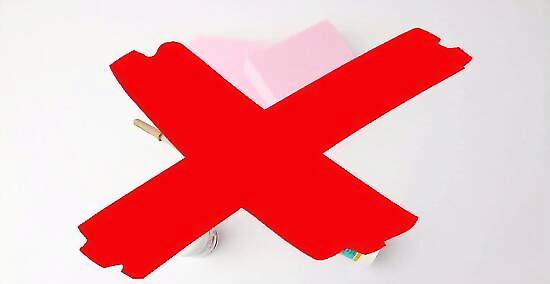
Don't use a material-specific glue. When it comes to gluing Styrofoam, you'll generally want to stay away from glues that are specifically designed to work on certain materials other than Styrofoam (e.g., wood glue, fabric glue, glues and epoxies used for construction projects, etc.). While some of these glues may work fine with Styrofoam, many may not work significantly better than cheap, basic craft glues, making this an inefficient use of your money. In addition, some select specialty glues can even dissolve Styrofoam and other plastics (see below).
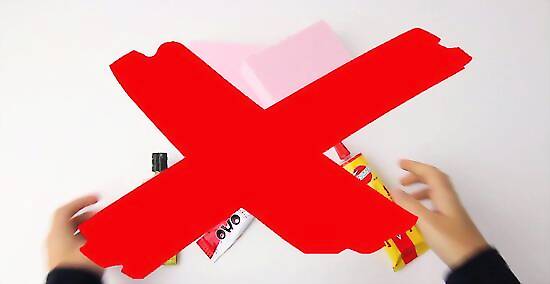
Don't use a glue containing a plastic solvent. Because it's fairly light and weak, it's easy to forget that Styrofoam is a plastic product. Styrofoam is essentially "foamed" plastic—that is, it's plastic that's been mixed with air, resulting in its light weight. Because Styrofoam is plastic-based, you'll want to avoid using any glues that contain a solvent that can dissolve plastic. Using one of these may erode your Styrofoam, creating a liquid mess and ruining your project. For instance, rubber cement, a fairly strong, flexible adhesive, often contains both alcohol and acetone. Acetone, the active ingredient in nail polish remover, can dissolve many types of plastics, making it a poor choice for Styrofoam. However, some non-acetone rubber cements may be suitable for Styrofoam use.
Applying the Glue

Clean and prepare your surfaces. Once you have the right glue, Styrofoam itself is fairly easy to work with—all you'll usually need to do is apply the glue to the Styrofoam, stick it to the other surface, and wait for it to dry. However, before gluing, it's always a good idea to clear each surface of dirt and debris by wiping with a clean, dry rag. Gluing over a dirty or dusty surface can interfere with the bonding action of the glue, resulting in a weaker hold. If you're gluing to an especially "gappy" surface (like a rough piece of wood with lots of surface imperfections), the effective hold of your glue may be reduced. In this case, you may want to try sanding to make the surface smoother and more regular—try using 200 grit or higher sandpaper.
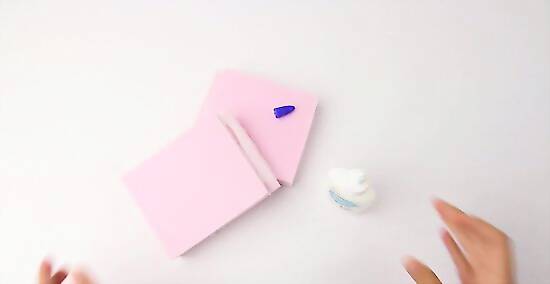
Apply the glue. When you're ready to start, apply your glue to the Styrofoam surface. For the strongest hold, use a thin, even layer that covers the entire surface. If you're not looking for a very strong hold, it's also OK to use beads or lines of glue. If you are working with a very large piece of Styrofoam, consider pouring the glue into a tray, and applying the glue with a paintbrush. This will ensure that the glue goes on quickly and evenly, which prevents any sections of glue from drying while others are still being applied. If you are working with small pieces, consider using white tacky glue or a hot glue gun. If you are using a hot glue gun, plan to work quickly. The glue will set and harden within minutes. Consider reinforcing Styrofoam balls with toothpicks. If you are going to glue two Stryofoam balls together, you might want to stick a toothpick into one of them. This will help "hold" the two balls together. Round objects have far less surface area than flat objects, after all.
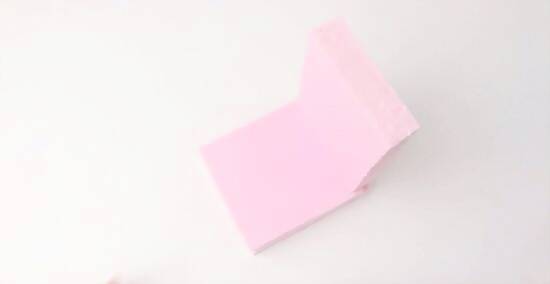
Attach the Styrofoam. When you're ready, press your piece of Styrofoam into the other surface. Press down gently to ensure that all of the glue comes in contact with the other surface. Depending on the type of glue and the amount you used, you'll usually have at least a minute or so during which you can easily slide your Styrofoam around, so use this time to make any minor adjustments that you need to. For extra hold, you may want to apply a little extra glue around the edges of your Styrofoam where it meets your other surface. Don't use any more than necessary to make a thin line or seam—this will prolong the drying process.

Allow time to dry. Next, all you need to do is wait! Depending on the size of your project, the type of glue you used, and the amount of glue you used, your drying time may vary from just a few minutes to many hours. Don't disturb your project while it dries or you may need to re-apply glue and start the drying process over. If necessary, use sturdy objects (like books, boxes, etc.) to prop your project in the proper position while it dries. Hot glue will set up faster when it is colder. Some glues will need more time to set, especially if it is very cold or humid.

Be wary of Styrofoam's relatively low strength. Most of the gluing methods described in this article for gluing Styrofoam are at least somewhat strong and shouldn't fail under normal conditions once the glue has dried. The same can't be said of Styrofoam itself, which is an exceptionally weak, fragile building material. Remember to handle styrofoam with care even after drying is complete—it's not hard to accidentally chip or break Styrofoam projects on walls, door frames, or other obstructions, glue or no.













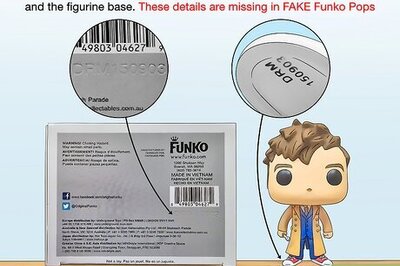

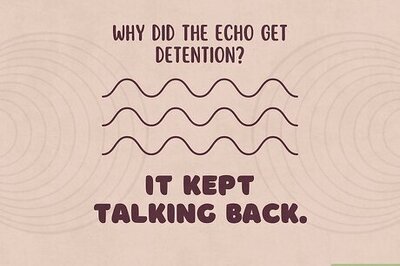




Comments
0 comment